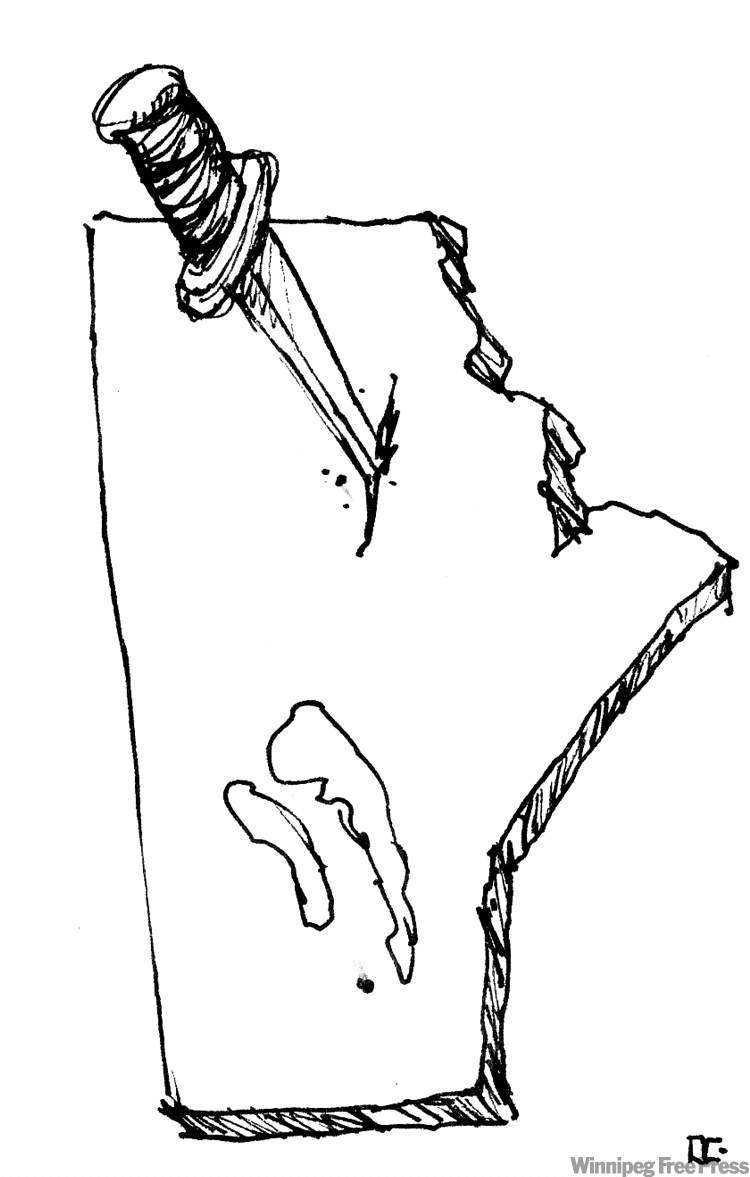Banning knives futile
Advertisement
Read this article for free:
or
Already have an account? Log in here »
To continue reading, please subscribe:
Monthly Digital Subscription
$1 per week for 24 weeks*
- Enjoy unlimited reading on winnipegfreepress.com
- Read the E-Edition, our digital replica newspaper
- Access News Break, our award-winning app
- Play interactive puzzles
*Billed as $4.00 plus GST every four weeks. After 24 weeks, price increases to the regular rate of $19.00 plus GST every four weeks. Offer available to new and qualified returning subscribers only. Cancel any time.
Monthly Digital Subscription
$4.75/week*
- Enjoy unlimited reading on winnipegfreepress.com
- Read the E-Edition, our digital replica newspaper
- Access News Break, our award-winning app
- Play interactive puzzles
*Billed as $19 plus GST every four weeks. Cancel any time.
To continue reading, please subscribe:
Add Winnipeg Free Press access to your Brandon Sun subscription for only
$1 for the first 4 weeks*
*$1 will be added to your next bill. After your 4 weeks access is complete your rate will increase by $0.00 a X percent off the regular rate.
Read unlimited articles for free today:
or
Already have an account? Log in here »
Hey there, time traveller!
This article was published 01/05/2010 (5612 days ago), so information in it may no longer be current.
Winnipeggers are more likely to become victims of a knife assault than other Canadians, Statistics Canada reported this week, prompting police Chief Keith McCaskill to declare that maybe there ought to be a law against carrying a knife in public. In Winnipeg, 10 per cent of crime victims were attacked with knives, compared to six per cent in Canada.
But the knife-crime rate, StatsCan notes, reflects this province’s higher violent crime incidence, not any particular affinity criminals here have with blades.
The Criminal Code generally proscribes the use of a knife as a weapon, wielded to harm or threaten someone.

The law in Canada reflects the fact that restricting knives in general would impinge upon the use of a ubiquitous tool found in households, used also by tradespeople, hunters, gardeners and sporting enthusiasts.
Chief McCaskill’s problem is with those knives that are in the possession of those likely to commit crime, and so he is intrigued by suggestions of Saskatoon’s police chief, who has called upon the legislature to give police the ability to seize knives they think may be used in a crime.
The Saskatchewan government has not done that, reflecting the fact that it is tough to separate tool from weapon, even for an officer of the law, and giving police that much discretion would likely infringe the rights of citizens.
That is why the Criminal Code proscribes the use of weapons, regardless of what they look like.
Aside from the difficulty of separating the criminal knives from the useful ones, banning or seizing them on the street will have limited effect, at best, at reducing the toll on victims.
StatsCan found that about half of the stabbings happened between acquaintances and most of them were relatives. That suggests that many of the stabbings happened in the home, not in public.
To add one more wrinkle to the knife-ban plan, StatsCan’s survey defined a knife as all piercing or cutting instruments, including broken bottles, screwdrivers and scissors.
There is a veritable toolbox full of potential weapons inside every house. Assuming they will be used for criminal purposes once taken onto the streets is too broad a reach of the law, which is what the Criminal Code already recognizes for knives, screwdrivers and scissors.


